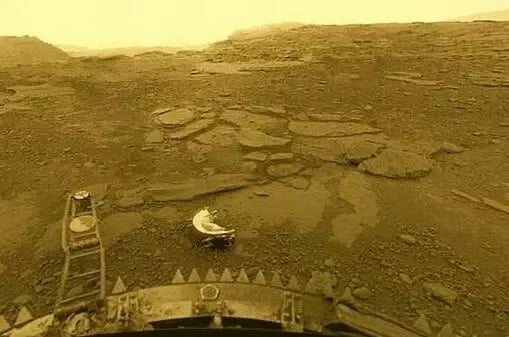The Triumph of the Venera 13 on Venus


Introduction to the Venera Missions
The Venera program, initiated by the Soviet Union during the 1960s and 1970s, aimed to explore the harsh environment of Venus. Among its many achievements, the Venera 13 and 14 landers stand out for their remarkable longevity during their missions. Notably, the Venera 13 lander operated for an impressive 127 minutes, surpassing the operational durations of its predecessors on this hostile planet, where temperatures can reach up to 471°C (880°F) and atmospheric pressure is 92 times that of Earth.
Exceptional Performance of Venera 13
Launched on October 1, 1982, the Venera 13 lander marked a significant milestone in planetary exploration. Its capability to remain operational on the surface of Venus for 127 minutes set a new record for the time spent by any spacecraft on the planet’s surface. Designed to function for only 32 minutes, Venera 13 exceeded its anticipated lifespan due to its robust engineering and innovative technology, which allowed it to capture stunning images and analyze the surface composition.
The Achievements of Venera 14
Following the success of Venera 13, Venera 14 was launched on December 4, 1982. It was another significant accomplishment, managing to operate on Venus for 57 minutes. Like its counterpart, Venera 14 was originally planned for a mere 32-minute mission duration. The unanticipated operational time allowed it to gather valuable scientific data, including photographs and surface measurements that contributed to our understanding of Venus’s geology.
Both landers provided essential insights into the planetary environment, offering valuable information about Venus's atmospheric conditions and surface materials. The rich data collected by the Venera missions has become a cornerstone of Venusian studies, paving the way for future explorations.
Legacy of the Venera Landers
The Venera 13 and 14 missions greatly expanded our knowledge of Venus and underscored the complexities of designing spacecraft capable of functioning in extreme conditions. These missions demonstrated that with careful planning and innovative techniques, spacecraft could perform well beyond their expected lifespans, transforming our understanding of planetary science. The Venera program remains a source of inspiration for contemporary missions to Venus and other planets, emphasizing the importance of perseverance and scientific inquiry in the pursuit of knowledge.
In summary, the Venera 13 and 14 landers achieved extraordinary feats during their missions, spending significant time on the surface of Venus and gathering crucial data that enhanced our understanding of the planet. Their lasting legacy continues to resonate through modern space exploration initiatives.
